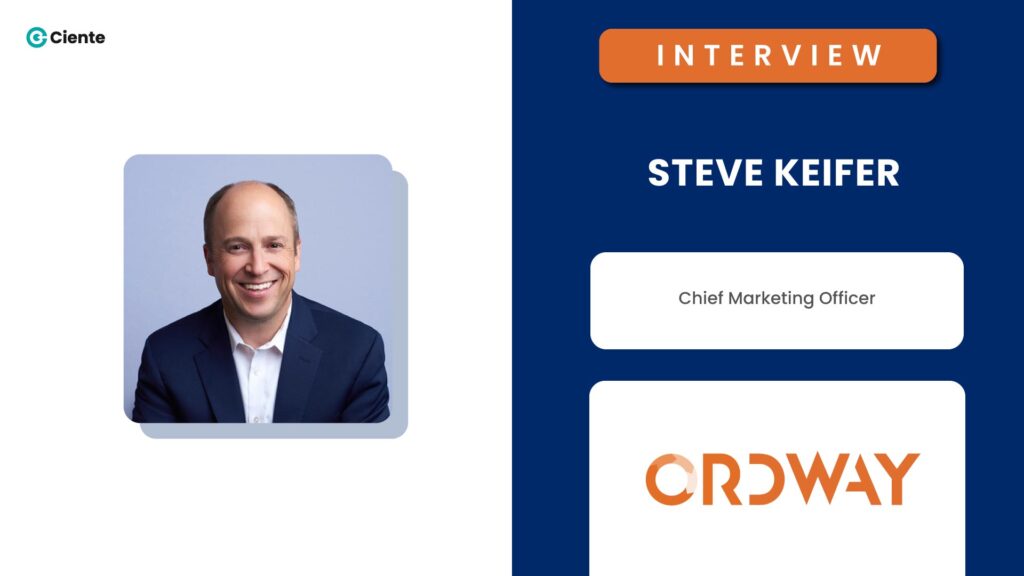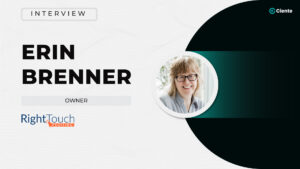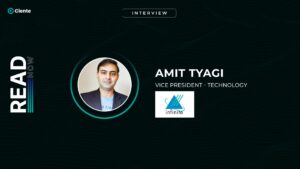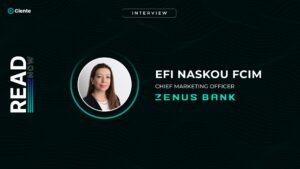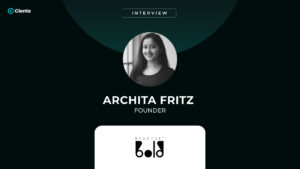What is your favorite part about working at Ordway?
Ordway’s target market is technology startups, which is really cool. We get to sell to all the newly funded companies in sectors like generative AI, crypto, blockchain, and cybersecurity.
To understand our buyer persona and ideal customer profile we have to understand their growth strategies and how they generate revenue.
Over the past two years, I’ve gotten to spend a lot of time studying the business models, pricing strategies, and financial reporting of the fastest-growing SaaS and cloud companies. I tend to geek out on stuff like this! In addition, startups are heavily influenced by their investors – venture capital and growth equity firms – so I’ve had to build a lot of knowledge in the different operating metrics (LTV/CAC, ARR, net dollar retention) and growth strategies that are important at each different stage (Series B, Series C, etc.)
What do you think is the most effective way of increasing a brand’s online presence?
If I had to pick one strategy, I would build an online community. There is no better place to be than hosting the platform that your current customers and prospective buyers are using to discuss their day-to-day challenges. The community could be on Slack or web-based with a platform like Discord. In most markets, it is a “winner-takes-most” paradigm for communities. Customers don’t have time to engage in more than one, possibly two communities. If there is already a dominant online community in your market, you may need to shift to plan B.
So what is plan B? What are other effective ways to increase your brand’s online presence? I’ve found it really varies from market to market. First and most important you need to find out where your prospective buyers are online. Are they active on subreddits, LinkedIn groups, or public slack channels? Are they searching on Google, YouTube, or ChatGPT for answers? Do they read online reviews on G2, TrustRadius, or Capterra? Do they engage in professional associations (think SHRM for HR, NRF for retail)? Are they engaged with tech mega-vendor (Microsoft, Oracle, SAP, Salesforce, Hubspot) ecosystems?
Finding your buyers online takes time. You’ll need to do experimentation in a variety of channels to find them. A shortcut that may accelerate your learning is to conduct a teardown of your competitors’ marketing strategies. More established competitors may already know the answer. In my experience, there are usually one or two places with a concentration of prospective buyers in each market. Once you identify those spaces you can double down there.
How do you handle marketing campaigns that didn’t give you the results you were hoping for?
It is a good thing to have marketing campaigns that don’t give you the results you were looking for. If you are not missing targets sometimes then you are either 1) not experimenting enough or 2) not setting your targets high enough.
When a campaign misses its target, I focus on looking forward, asking how we can perform better in the future. It is important to understand why the campaign was not effective. Is our target buyer simply not engaged with the marketing channel we were attempting to use (e.g. LinkedIn, Bing, G2)? Or was the lack of success tied to one of the campaign variables (e.g. budget, timing, topic, audience, etc.)? If the root cause is the latter, then we should consider experimenting in the same channel with a different mix of campaign variables. If the root cause is the former, then we should not invest further in that channel.
What steps have you deployed to improve your current marketing efforts to increase your customer base?
Blue oceans – generating original thought leadership insights that no one else is talking about.
There is a deafening amount of noise in marketing channels for SaaS products these days. Every SaaS company is publishing a weekly blog post (if not three). Every SaaS company has a podcast show. Every SaaS company is sending email newsletters. Every SaaS company is hosting webinars. Every SaaS company is running targeted ads with Facebook custom audiences. Every SaaS company is doing Google paid search. Every SaaS company has SDRs cold-calling buyers.
And it’s about to get 100 times more noisy. The advent of generative AI technologies will enable SaaS companies to pump up the volume one hundred without much incremental cost and effort.
If you do the same thing everyone else is doing you will never stand out from the noise. You need to shift away from the “more, more, more” mentality that dominates most marketing teams’ thinking and identify how to differentiate yourself.
One strategy we are employing at Ordway is what I call blue ocean messaging and content. Often in markets, most of the vendors in any given market are all talking about the same things and engaging in cutthroat competition for eyeballs. It’s a red ocean. You want to find the blue oceans – the big questions that your customers have that no one has answered and try to provide insights on those topics.
What are your favorite elements that you strategize to make your marketing campaigns successful?
How to get a multiplier effect from optimizing the different campaign variables.
Success is not just determined by the marketing channel used (webinar, social media ad, SDR prospecting), but also what I call “campaign variables” such as the budget, timing, audience/reach, topic/message, authority/source, etc. For example, suppose we were going to host a live webinar to generate leads. The registration numbers will be driven by the choices made about the campaign variables such as:
- Timing/schedule – We could host it the first week of January when everyone is returning from the holidays and racing to get budgets nailed down or we could schedule for February when our audience is less busy.
- Topic/message – We could focus on an evergreen topic that is always relevant or we could focus on a trending topic that everyone is hash-tagging on social media.
- Audience/reach – We could self-host the webinar and promote to our own marketing database or we could pay a media publication with a 20X larger database to produce it.
- Authority/source – We could have our Chief Product Officer be the speaker or we could secure an industry analyst, book author, or outside consultant (at a business partner) with a strong personal brand to speak.
Making the right choices on these campaign variables could be the difference between getting 20 registrations versus 200 or 2000.
Share with us the most successful digital marketing campaign you have led in your career!
Building a microsite that dominated SEO in a cutthroat market with 500 vendors.
A little more than 10 years ago I was running marketing at a $500M global software company. One of the markets we were selling into was the electronic invoicing space which had over 500 different vendors competing from mega-vendors like SAP and Verizon to niche startups focused on a single country. Most of the tech vendors were spending a small fortune on Google Ads to ensure they showed up at the top of the search engine results page.
Back then the Google search algorithm was still a work in progress. You may remember the Penguin and Panda algorithms that fundamentally changed the rules of the game for SEO. Millions of businesses disappeared from the web, effectively, overnight.
I was fortunate to have a crack team of digital marketing experts in our UK office who understood the direction Google was heading. They were able to use organic SEO techniques to catapult us into a leading position that landed us consistently in the top 3 results. The strategy was so effective that even five years later – long after the company was acquired, and no one was keeping the content updated – it still prominently ranked in the top 5.
Tell us how sales enablement acts as a “force multiplier” for increasing win rates for experienced reps.
Sales enablement always reports to the Chief Revenue Officer. However, many of the projects taken on by sales enablement teams rely heavily on the marketing team for execution.
Having a best-in-class product marketing function to support the sales enablement efforts can have a big impact on win rates. The best product marketing teams are able to act as a sales “force multiplier” boosting win rates by 10%, 20%, or even higher.
Suppose a company has a 20% lead-to-win rate – one out of every five leads close. If you were able to increase the lead-to-win rate to 25%, the volume of leads you would need to generate will decrease. With a 20%-win rate, you need 500 leads to win 100 deals. With a 25%-win rate, you only need 400 leads to win 100 deals. It’s worthwhile trying to improve win rate because you can realize a big efficiency gain and lower your customer acquisition costs (CAC). You will not only lower marketing spending, but you also improve sales productivity.
Some ways product marketing can help improve win rate and act as a force multiplier by getting laser-focused on helping sales overcome their biggest challenges:
- Wider Target Market – Are there undiscovered buyer personas, use cases, and customer profiles that might buy your product that haven’t been targeted in the past?
- Booking Meetings – What are the magical sound bites and subject lines that will boost response rates to cold emails?
- Advancing Discovery Calls – What tools can you give sales that get prospects not in an active purchasing cycle to agree to a demo or further exploratory discussions?
- Making the Short List – How can you arm AEs with the competitive kryptonite needed to knock others out of play and get down-selected?
- Close Rate – How can you help deals that are heading towards a “no decision” outcome to convert into a pilot project instead?
Another thing I’d suggest is to focus on helping the buyer. The more you can help the buyer, the more you are helping the sales organization.
- Commercial Insights – Think Challenger Sale. How can you empower sales with benchmark data, case studies, and competitive insights that teach the prospect something they didn’t know?
- Relationship Status – How can you arm the sales team with educational and consultative materials, so the buyer makes the leap from thinking about you as a supplier trying to sell something, but instead as a business partner helping to achieve their goals?
How do you handle team members who have different opinions about the direction of a campaign?
A healthy debate about campaign strategy is a good thing and typically leads to better decisions. Three questions I would ask in this scenario:
Can we use data to guide us? Is there a similar campaign we have run in the past? If so, the historical performance data may be able to provide insights into what approach to take.
Can we try both approaches in parallel? For example, if the debate is over a landing page, search ads, or email send, you may be able to A/B test the different approaches.
Can we try both approaches at different times? Which campaign strategy is most likely to fulfill our near-term goals? If there is a clear answer, we should execute on the one that will enable short-term success and then revisit the alternative approach in the near future.
What is your leadership philosophy?
I prefer to adopt a blend of leadership styles rather than conform to just one of typical paradigms. I also have found that you need to adapt different leadership styles in different scenarios.
I’ve had a diverse range of experience leading marketing at companies of different sizes from small startups with $2M in revenue to 20-year-old public companies with $2B in revenue. The leadership approach I would take for a marketing team that is underperforming and in need of transformation is different from the approach that I would take for one that is executing well and is in “scale-up” mode. The level of oversight and coaching I would apply to a tenured team with an average of 15 years of experience is different from the approach I would take to a team of entry-level marketers.
Ideally, I would adopt a blend of transformational, democratic, and participative leadership styles. However, there are times when you need to take a more autocratic approach to drive change or results quickly.
Could you share some key global lessons to build a “Challenger Brand” that B2B buyers view as product innovators, market disruptors, and thought leaders?
The idea of a challenger brand originated in the consumer market, but I think it applies to businesses as well. Building a challenger brand is about telling a story to the market and changing the narrative around how customers think about a problem. The storyline typically breaks into four parts:
- The Problem – The current way of doing things is broken. It takes too long. It is too expensive. It is too high risk. It has negative side effects (e.g. environmental impact).
- The Solution – There’s an emerging technology that is much better. It is much faster or much cheaper or much safer. And it is now ready for adoption en masse.
- The Proof – A handful of big-name customers X, Y, and Z are early adopters who have made the change and realized these massively quantifiable benefits.
- The Change – The incumbents are the bad guys. Their legacy technology is holding back progress. The time is now to make the shift to newer technology.
Once you have the challenger storyline, you need to tell it over and over again through as many channels as possible. The founder or CEO often takes a leading role in evangelizing the story. Some author books. Others go on the speaking circuit. They interview with journalists. They pitch industry analysts. They get management consulting firms on-board by explaining how much money they can make by selling transformation projects to their clients. Soon it’s not just the founder, but other industry opinion leaders telling the story as well.
The marketing team plays a big role as well. They buy stage time at big tradeshows and virtual events to give the pitch. They document the storyline in eBooks and content assets. They push the message on social media channels and reinforce it with digital ads that pop up in Google search results and the start of YouTube videos.
The market naturally wants to embrace the challenger brand story. Everyone wants to see David take on Goliath and win. People like to root for the underdog, because they believe they will bring positive change for the industry. The most effective challenger brands build a groundswell of support that turns into a movement that gains enough momentum that it cannot be stopped. The rest is history.

Steve Keifer,
Chief Marketing Officer at Ordway
Steve is the Chief Marketing Officer at Ordway, responsible for the company’s growth strategy, demand generation, and brand development programs, which are designed to expand the market share in the SaaS, cloud, fintech, AI, and IoT segments. Prior to joining Ordway, Steve led marketing and product organizations at five other SaaS andcloud providers – including several that achieved hypergrowth, filed for IPOs, and reached billion-dollar valuations.

